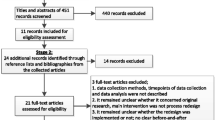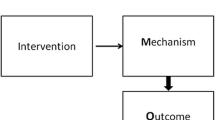Abstract
Background: Worldwide patient safety has become a major social policy problem for healthcare organisations. As in other organisations, the patients in our hospital also suffer from an inadequate distribution process, as becomes clear from incident reports involving medication errors. Medisch Spectrum Twente is a top primary‐care, clinical, teaching hospital. The hospital pharmacy takes care of 1070 internal beds and 1120 beds in an affiliated psychiatric hospital and nursing homes. Objective: In the beginning of 1999, our pharmacy group started a large interdisciplinary research project to develop a safe, effective and efficient drug distribution system by using systematic process redesign. The process redesign includes both organisational and technological components. This article describes the identification and verification of critical performance dimensions for the design of drug distribution processes in hospitals (phase 1 of the systematic process redesign of drug distribution).Methods: Based on reported errors and related causes, we suggested six generic performance domains. To assess the role of the performance dimensions, we used three approaches: flowcharts, interviews with stakeholders and review of the existing performance using time studies and medication error studies.Conclusions: We were able to set targets for costs, quality of information, responsiveness, employee satisfaction, and degree of innovation. We still have to establish what drug distribution system, in respect of quality and cost‐effectiveness, represents the best and most cost‐effective way of preventing medication errors. We intend to develop an evaluation model, using the critical performance dimensions as a starting point. This model can be used as a simulation template to compare different drug distribution concepts in order to define the differences in quality and cost‐effectiveness.
Similar content being viewed by others
References
Kohn LT, Corrigan JM, Donaldson MS. To err is human: building a safer health system. Washington, DC: National Academy Press, 1999.
Lessons in patient safety. Chicago: National Patient Safety Foundation, 2001.
Bates DW. Medication errors. How common are they and what can be done to prevent them. Drug Safety 1996; 15: 303–10.
Crosby PB. quality is free: the art of making certain. New York: McGrawHill, 1979
Juran JM. Quality control handbook. New York: McGrawHill, 1970
Van den Bemt PMLA. Drug related problems in hospitalized patients - a review. Drug Safety 2000; 22: 321–33.
Colen HBB, ten Bokum, EM, Neef C. Een praktijk die niet aan de verwachtingen beantwoordt. Onderzoek naar de kwaliteit van verschillende distributiesystemen. [A practice that does not comply with patient expectations. Investigation into the quality of different distribution systems.] Pharm Weekbl 2002; 137 (50): 1782–8.
Leape LL. Error in medicine, JAMA 1994; 272: 1851–7.
Barker KN, Harris JA, Webster DB. Consultant evaluation of a hospital medication system: analysis of the existing system. Am J Hosp Pharm 1984; 41: 2009–16
Hammer M, Champy J. Reengineering the corporation, a manifesto for business revolution. London: Nicholas Brealy Publishing, 1993.
Allan EI, Barker K. Fundamentals of medication research. Am J Hosp Pharm 1990; 47: 555–71.
Dean BS, Barber ND. Validity and reliability of observational methods for studying medication administration errors. Am J Hosp Pharm 2001; 58: 54–9.
Flynn EA, Barker KN, Pepper GA et al. Comparison of methods for detecting medication errors in 36 hospitals and skilled-nursing facilities. Am J Health Syst Pharm 2002; 59: 436–46.
Author information
Authors and Affiliations
Rights and permissions
About this article
Cite this article
Colen, H., Neef, C. & Schuring, R. Identification of crucial performance dimensions Phase 1 of the systematic process redesign of drug distribution . Pharm World Sci 25, 118–125 (2003). https://doi.org/10.1023/A:1024020902064
Issue Date:
DOI: https://doi.org/10.1023/A:1024020902064




